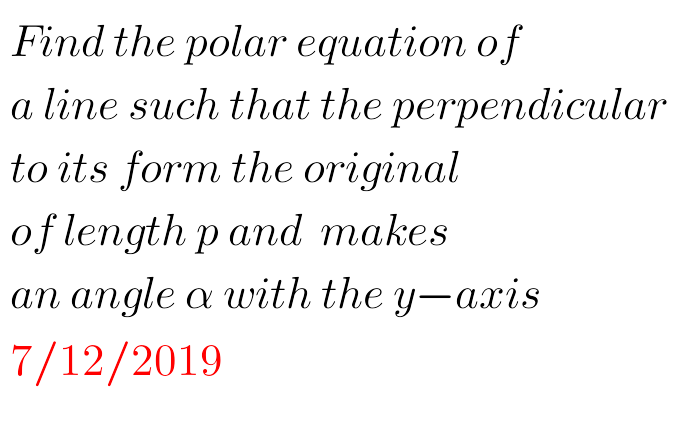
AllQuestion and Answers: Page 1378
Question Number 75110 Answers: 1 Comments: 0

Question Number 75105 Answers: 0 Comments: 1

Question Number 75104 Answers: 1 Comments: 0

Question Number 75102 Answers: 0 Comments: 0
Question Number 75101 Answers: 4 Comments: 2
Question Number 75100 Answers: 2 Comments: 0
Question Number 75099 Answers: 1 Comments: 4
Question Number 75098 Answers: 1 Comments: 0
Question Number 75093 Answers: 1 Comments: 1
Question Number 75083 Answers: 1 Comments: 0
Question Number 75082 Answers: 1 Comments: 0
$${find} \\ $$$$\int_{\mathrm{0}} ^{\pi} {e}^{{cosx}} {sinx}\:{dx} \\ $$
Question Number 75081 Answers: 1 Comments: 0
Question Number 75080 Answers: 0 Comments: 1
Question Number 75079 Answers: 0 Comments: 0
Question Number 75078 Answers: 1 Comments: 0

Question Number 75066 Answers: 1 Comments: 0
Question Number 75063 Answers: 1 Comments: 1
Question Number 75059 Answers: 0 Comments: 0

Question Number 75058 Answers: 1 Comments: 2
Question Number 75048 Answers: 1 Comments: 1
Question Number 75046 Answers: 0 Comments: 3

Question Number 75041 Answers: 1 Comments: 1
Question Number 75040 Answers: 1 Comments: 0
Question Number 75034 Answers: 3 Comments: 0

Question Number 75033 Answers: 1 Comments: 0
Question Number 75027 Answers: 1 Comments: 1

Pg 1373 Pg 1374 Pg 1375 Pg 1376 Pg 1377 Pg 1378 Pg 1379 Pg 1380 Pg 1381 Pg 1382
